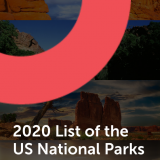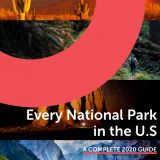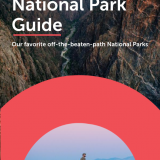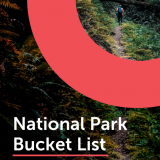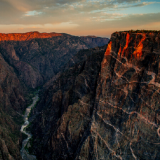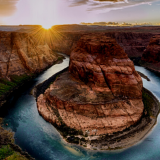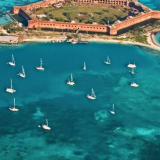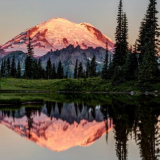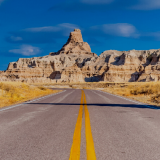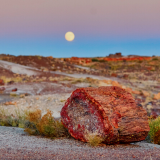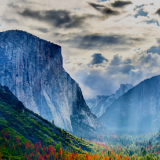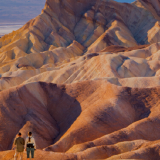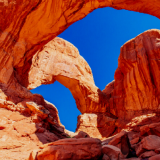From swivel chairs to space rockets, the US has had some darn bright ideas over its short history. But of all the ideas that have changed the world, the national parks system is surely close to the top. It was way back in 1872 that the sulfur-belching lands of Yellowstone were designated as protected lands by President Ulysses S Grant. Fast forward to the 21st century and there’s now 63 national parks in the US representing some of the most iconic natural landscapes on the planet — and a 64th national park on the way!
From the towering peaks of the Rocky Mountains to the pristine coastal landscapes of Acadia National Park, these protected areas offer an unparalleled opportunity to immerse yourself in the raw beauty and rich biodiversity that defines the United States. Whether you are an avid hiker, a wildlife enthusiast, or simply seeking solace in the great outdoors, the national parks of the US beckon with awe-inspiring vistas, captivating ecosystems, and a chance to forge an intimate connection with the natural world. So, grab your America the Beautiful Pass and let’s explore!
Want to make the most of your national parks experiences? Take the VanLife Adventure Trail Challenge to win prizes as you explore the great outdoors!
List of National Parks in the US + National Parks Map
National Parks in Alaska
Denali National Park

Denali National Park is the epitome of wilderness, a true gem of unbridled natural beauty. The park is home to an incredibly diverse array of wildlife, from moose to wolves, bears, caribou, and more. Visitors can spot them on the park’s backcountry trails or take in the sweeping vistas on a scenic drive. The park’s crown jewel is undoubtedly Mount Denali (Mount McKinley), standing at a staggering 20,310 feet above sea level, this majestic peak draws mountaineers from all over the world. Adventurous visitors can take on the challenge of climbing this behemoth, while others can admire its breathtaking beauty from the comfort of the park’s many lookout points.
Also see: 2023 Guide to Denali National Park on Seeker.
Gates of the Arctic National Park

Gates of the Arctic National Park offers a truly wild and remote experience, far from the hustle and bustle of modern life. With no roads or marked trails, visitors must rely on their own skills and knowledge to navigate the rugged terrain. However, for those willing to make the journey, the rewards are many. The park is home to an incredible variety of wildlife, including grizzly bears, wolves, and caribou. Visitors can also witness the Northern Lights, which dance across the sky in vibrant hues during the winter months. For a unique perspective on the park, visitors can embark on a dog-sledding or Nordic skiing adventure, gliding across the snow and taking in the stunning scenery.
Glacier Bay National Park

Glacier Bay National Park marks the spot where the colossal ice fields of the Saint Elias Mountains spill into the sub-zero waters of the North Pacific Ocean. Sounds dramatic? Well…that’s because it is. So dramatic, in fact, that over half a million people head to gawp at the mighty fjords and mountains each year, many of them on cruise ships — the park is only accessible by boat and plane. The park’s most impressive sights are its glaciers, which are constantly moving and changing as they carve their way through the landscape. Visitors can watch as massive chunks of ice break off the glaciers and crash into the ocean below, creating towering waves and thunderous crashes.
Katmai National Park

Katmai National Park is a wildlife lover’s paradise, and its most famous residents are the park’s brown bears. During the annual salmon run, these magnificent creatures flock to the Brooks River to feast on the fish. Visitors can watch as the bears fish for their meals, often coming within just a few feet of the viewing platforms. The park is also home to other wildlife, including caribou, moose, wolves, and foxes, making it an ideal destination for anyone interested in viewing Alaska’s incredible wildlife up close.
Also see: 2023 Guide to Katmai National Park on Seeker.
Kenai Fjords National Park
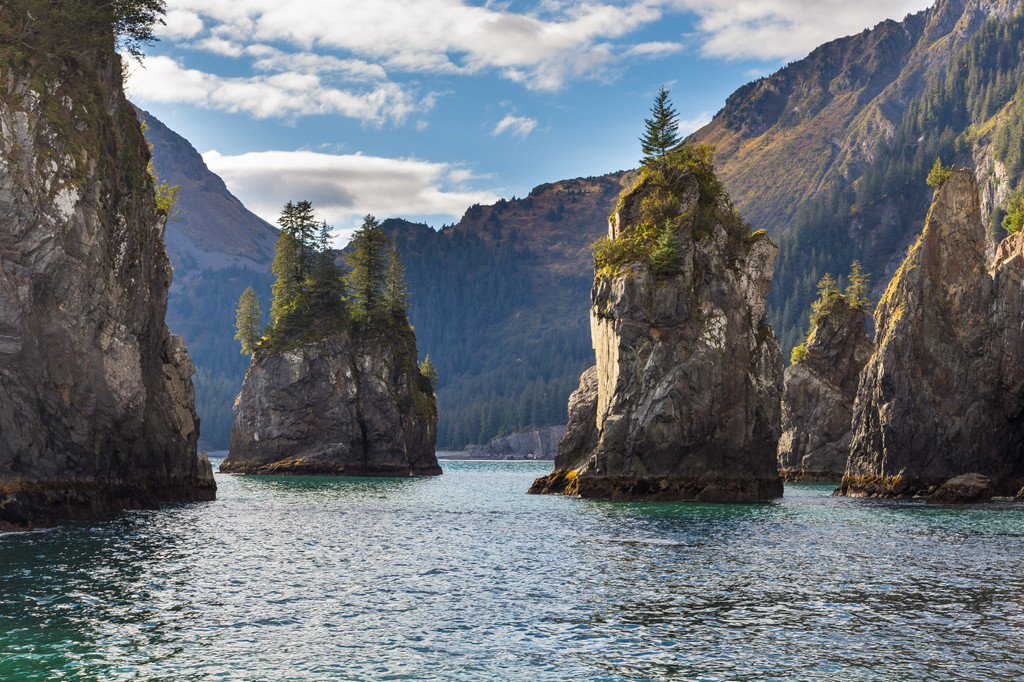
Kenai Fjords National Park protects nearly 550,000 acres of some of the most impenetrable but wonderful natural landscapes close to Anchorage. As the name implies, the park is home to stunning fjords, towering mountains, and dramatic glaciers that are sure to leave visitors in awe. One of the park’s most popular attractions is the Harding Icefield, a massive sheet of ice that covers over 700 square miles and is the source of many of the park’s glaciers. Visitors can take guided hikes to explore the icefield and witness the power of glacial erosion up close.
Kobuk Valley National Park

Kobuk Valley National Park is where the Arctic meets sand dunes. Yep, you read that right. The park’s most iconic feature is the towering Great Kobuk Sand Dunes, which cover over 25 square miles and can reach heights of up to 100 feet. The dunes are a popular destination for hikers, photographers, and nature enthusiasts, offering a rare glimpse of a truly unique ecosystem.
Lake Clark National Park

Are you ready to escape to a place that feels like it’s straight out of a dream? Then look no further than Lake Clark National Park. This secluded national park is a true wilderness paradise, with its rugged landscapes and pristine waters just waiting to be explored. It’s a place where the only way to get around is by floatplane or ATV, which only adds to the sense of adventure and excitement. From the rushing rivers full of salmon to the towering peaks of the Chigmit Mountains, there’s no shortage of natural wonders to behold in this hidden gem of Alaska.
Wrangell-St. Elias National Park

Welcome to the largest single protected wilderness in the whole of the United States. At Wrangell-St. Elias National Park, think large, then double it! Not including adjoining preserves, there’s a jaw-dropping eight million acres to get through in this giant US national park. Whether you choose to take on the challenge of climbing Mount Saint Elias, or explore the vast expanse of the Malaspina Glacier – there’s no shortage of adventure to be had here.
National Parks in American Samoa
National Park of American Samoa

National Park of American Samoa is a hidden gem in the Pacific Ocean that offers a unique blend of natural beauty and Polynesian culture. The park is spread across three islands – Tutuila, Ofu, and Ta‘ū – and features a range of diverse ecosystems, including rainforests, coral reefs, and volcanic peaks. One of the most popular places to visit in the park is the Pago Pago Harbor, which is the main port on Tutuila and serves as the gateway to the park. Visitors can take a boat tour of the harbor to see the stunning coastline and the surrounding mountains, or they can explore the nearby Fagatele Bay National Marine Sanctuary, which is home to a wide variety of marine life.
Also see: 2023 Guide to National Park of American Samoa on Seeker.
National Parks in Arizona
Grand Canyon National Park

Grand Canyon National Park might just be the headline act of America. Yep, there’s probably no more iconic a natural feature on the continent than the colossal gorge that carves its way through this corner of the West. Second only to the Great Smokies in terms of annual visitor numbers, the preserve draws millions to the snaking Colorado River. The park is divided into two main areas, the South Rim and the North Rim, each with its own unique set of landmarks and viewpoints. The South Rim is the more accessible of the two, and it’s where most visitors spend the majority of their time. Some of the most popular viewpoints on the South Rim include Navajo Point, which offers panoramic views of the canyon and the Colorado River, and the Desert View Road, which winds its way along the eastern edge of the canyon and provides access to several breathtaking overlooks.
Also see: 2023 Guide to Grand Canyon National Park on Seeker.
Petrified Forest National Park

If you’re imagining a woodland fresh from an Alfred Hitchcock screening, you can stop right now. The ‘petrified’ in the Petrified Forest National Park refers to a process of fossilization that sees minerals turn organic matter into stone. It’s a process that’s worked wonders on the I-40 between Sanders and Holbrook, where 230 square miles of land contains ancient stones that were once actually trees.
The park’s most famous feature is obviously its vast collection of petrified wood, some of which date back more than 200 million years. Visitors can take a leisurely hike along the Blue Mesa Trail, which winds through an eerie landscape of hills and spires. Along the way, you’ll pass by hundreds of logs that have turned to stone over the millennia, each one sporting its own unique color and pattern.
Also see: 2023 Guide to Petrified Forest National Park on Seeker.
Saguaro National Park

Saguaro National Park is a vast national park in Arizona that covers over 90,000 acres of the Sonoran Desert. Home to the iconic saguaro cactus, the park is a mecca for nature lovers, hikers, and outdoor enthusiasts. Visitors can explore the park’s two districts, the East and West, each with its unique charm and attractions. The Tucson Mountain District boasts scenic drives, hiking trails, and stunning views of the rugged Tucson Mountains, while the Rincon Mountain District features a diverse range of flora and fauna, including the rare and endangered Mexican spotted owl. April is the best time to visit the park to witness the saguaro cactus in full bloom, and visitors can also enjoy guided tours such as moonlight hikes, bird watching tours, and stargazing programs.
Also see: 2023 Guide to Saguaro National Park on Seeker.
National Parks in Arkansas
Hot Springs National Park

The steaming pools of mineral-rich water that bubble up from the ground in Hot Springs National Park have been magnetizing humans since before anyone can remember. First came the Native American shamans; then came the Prohibition gangsters (Al Capone even had a dip here). These days, the springs – which can hit temperatures of up to 143 F – can still be experienced through vintage spa houses. The water in these hot springs is heated deep underground and contains a variety of minerals, including calcium, magnesium, and potassium.
Also see: 2023 Guide to Hot Springs National Park on Seeker.
National Parks in California
Channel Islands National Park
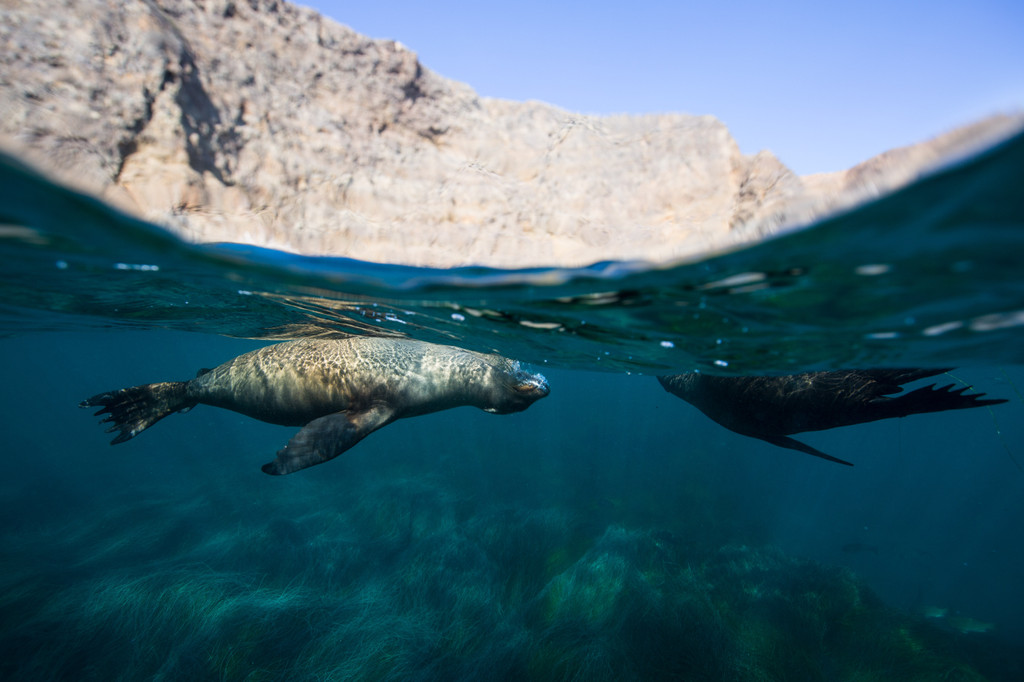
Take five islands: Anacapa, Santa Cruz, Santa Barbara, Santa Rosa, and San Miguel. Add 145 endemic species of animal, circling blue whales, myriad dolphins, underwater forests of sea fans and kelp, white-tinged beaches, and hills of sand dunes speckled with rushrose and oak. Viola – that’s the amazing Channel Islands National Park. The islands are home to a variety of endemic species of plants and animals, including the island fox and the island scrub jay. Visitors can also explore the park’s underwater world, which is home to a variety of colorful fish, sea fans, and kelp forests. Whale watching is a popular activity, here, as the surrounding waters are home to a variety of marine mammals, including blue whales, humpback whales, and dolphins.
Also see: 2023 Guide to Channel Islands National Park on Seeker.
Death Valley National Park

Phew! It’s hot in here. Well…get used to it folks, because Death Valley National Park can bust thermometers with heat that scorches over 134 F. That’s hot enough to fry an egg on the floor! But don’t do that – they’ve actually asked people to stop. Spanning over 3 million acres, the park is known for its extreme temperatures, unique geology, and stunning landscapes. The park is home to a number of incredible attractions, including Zabriskie Point, a popular viewpoint that offers panoramic views of the surrounding badlands. Here, visitors can take in the strikingly eroded landscape, which has been shaped by millions of years of geologic activity. From the top of the point, visitors can also see the colorful layers of rock that make up the park’s iconic formations.
Also see: 2023 Guide to Death Valley National Park on Seeker.
Joshua Tree National Park
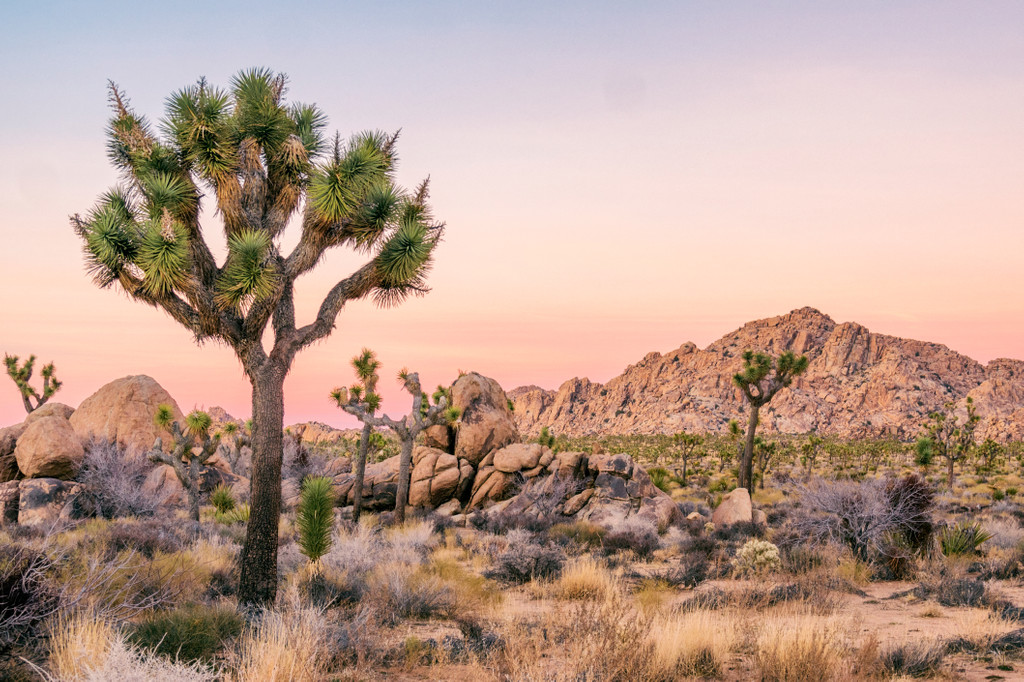
Tucked away in southeastern California, Joshua Tree National Park is a desert wonderland known for its otherworldly landscape and unique geological features. The park covers over 790,000 acres and is named after the distinctive Joshua trees that dot the landscape. These trees are actually a species of yucca plant and can grow up to 40 feet tall. They have a twisted, spiky appearance and are known for their unusual silhouette against the bright blue sky. In addition to the Joshua trees, the park is also home to a variety of unique rock formations, including the aptly named Skull Rock and the popular bouldering spot, the Great Burrito. The park is a popular destination for rock climbers, hikers, and photographers, as well as anyone seeking a unique outdoor experience.
Also see: 2023 Guide to Joshua Tree National Park on Seeker.
Kings Canyon National Park
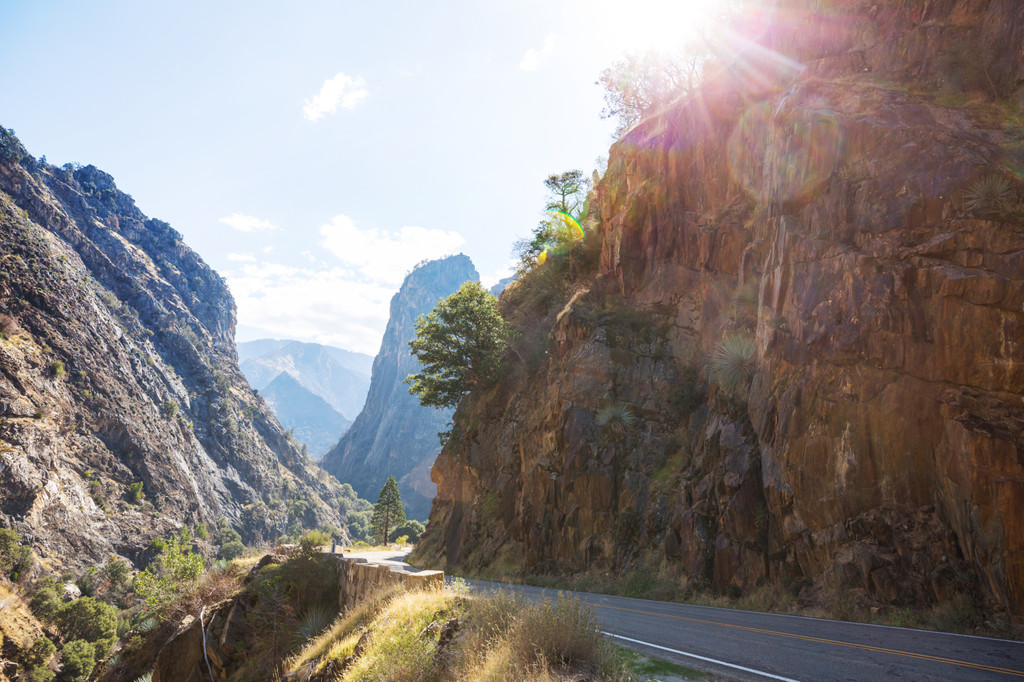
Don’t want the crowds of Yosemite but do want hulking granite domes in the Sierra Nevada? Kings Canyon National Park is a hidden gem nestled in the Sierra Nevada mountains, offering stunning vistas and abundant opportunities for outdoor recreation. The park is home to a variety of geological formations, and visitors can hike along iconic trekking routes like the Pacific Crest Trail and the John Muir Trail, which offer breathtaking views of the surrounding landscape. One of the park’s main attractions is its giant sequoia trees, some of which are thousands of years old and among the largest trees in the world. The General Grant Tree is one such example and is one of the top attractions in Kings Canyon. It is the second-largest tree by volume in the world, second only to the General Sherman tree in nearby Sequoia National Park.
Lassen Volcanic National Park

Lassen Volcanic National Park is a world of stark contrasts. One minute you’ll be gazing at harsh lava fields and smoking calderas, as plumes of sulfur and smoke twist and turn in the dry air. The next, you could be navigating a forest of fragrant red firs and aspens, spotting wildflowers and butterflies in hidden alpine valleys. One of the park’s most popular attractions is Bumpass Hell, a geothermal site named after a local miner who fell into a boiling mudpot. Visitors can hike along the boardwalk trail and witness the bubbling mud pots, steaming vents, and brightly colored hot springs that make up this otherworldly landscape.
Also see: 2023 Guide to Lassen National Park on Seeker.
Pinnacles National Park

Pinnacles National Park is a haven for hikers and outdoor enthusiasts alike. Located in California, the park is home to a unique landscape forged by ancient volcanoes and tectonic plates. The park is divided into two halves, the east and west entrances, and each offers a different experience. At the west entrance, visitors can explore the towering spires and jagged peaks of the High Peaks Trail. This trail offers a challenging hike that rewards with breathtaking views of the surrounding valleys and mountains.
Also see: 2023 Guide to Pinnacles National Park on Seeker.
Redwood National Park

A tree-hugger’s paradise, the Redwood National and State Parks spill down the California Coast Ranges to a roaring Pacific Ocean. Together, the conglomeration of reserves covers nearly 140,000 acres, ranging from the California-Oregon state line to the woods south of the Klamath River. The ginormous specimens of Tall Trees Grove (some trees there are over 370 feet!) are one of the main draws, but visitors can also fern-filled canyons, bridle trails, and deserted beaches.
Also see: 2023 Guide to Redwood National Park on Seeker.
Sequoia National Park

Where else in the world can you drive through a toppled tree trunk and scale to mountain lookouts above the clouds on the Great Western Divide? Answer: Nowhere except Sequoia National Park. Sequoia National Park is a land of giants, where the trees are the main attraction. The park is home to five of the 10 largest trees in the world, including the General Sherman tree. Standing at a whopping 275 feet tall and with a base circumference of over 100 feet, General Sherman is the largest known living single-stem tree on earth. The Giant Forest, where General Sherman is located, is also home to over 8,000 other sequoias, making it a must-visit destination for nature enthusiasts. For a more adventurous experience, head to the High Sierra Trail, which takes you through some of the most stunning and rugged landscapes in the park. Hike through alpine meadows, cross raging rivers, and trek up steep mountain passes for breathtaking views of the Sierra Nevada Mountains.
Also see: 2023 Guide to Sequoia National Park on Seeker.
Yosemite National Park
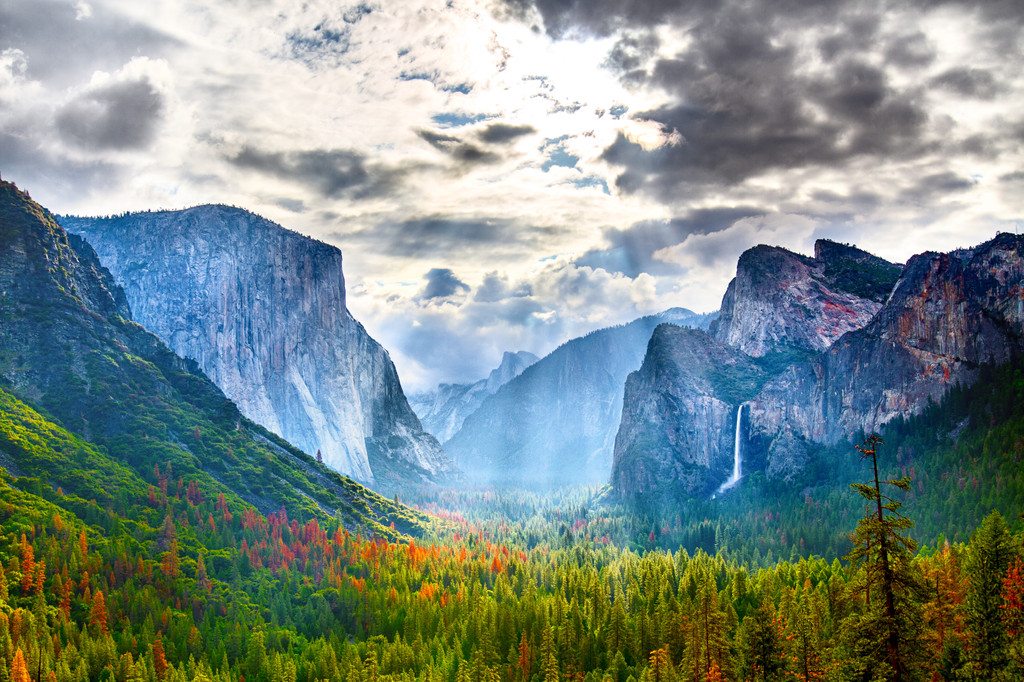
Yosemite National Park is one of the headline acts of the Golden State. Legendary among free climbers (if you haven’t watched Free Solo yet, now’s the time) and visited by more than four million people each year, it’s something truly special. The heart of it all is the awesome Yosemite Valley, which is guarded by the sheer walls of El Capitan and the Half Dome. Hiking is abundant. Waterfall watching abounds. Scenic drives are everywhere. What more could you want?
The park’s centerpiece is the stunning Yosemite Valley, which is home to some of the most iconic landmarks of the American West. The granite cliffs of El Capitan and Half Dome dominate the skyline, attracting rock climbers from around the world to attempt their summits. Hikers can explore over 800 miles of trails that wind through the park’s pristine wilderness, from the easy stroll to Mirror Lake to the challenging trek up the Mist Trail to the top of Vernal and Nevada Falls. In the spring, visitors can witness the thunderous power of the park’s waterfalls, including Yosemite Falls, which drops a staggering 2,425 feet. In the fall, the valley is ablaze with color as the leaves of the deciduous trees turn brilliant shades of yellow, orange, and red.
Also see: 2023 Guide to Yosemite National Park on Seeker.
National Parks in Colorado
Black Canyon of the Gunnison National Park

Named Black Canyon because the sunlight only touches the depths of the canyon for a few minutes each day, Black Canyon of the Gunnison National Park is a hidden gem for nature enthusiasts and adventure seekers. The park is home to several lookout points that offer breathtaking views of the rugged terrain, towering cliffs, and deep canyons. Devils Lookout and Pulpit Rock Overlook are just some of the must-visit vistas that offer jaw-dropping panoramas of the Black Canyon. For those who want to explore the park’s wild side, there are many hiking trails that range from easy to strenuous, including the challenging Inner Canyon trail that takes visitors deep into the canyon. Hikers can navigate the steep drop-offs, narrow ledges, and rugged terrain, and marvel at the stunning views.
Also see: 2023 Guide to Black Canyon of the Gunnison National Park on Seeker.
Great Sand Dunes National Park

Great Sand Dunes National Park is home of the tallest sand dunes in North America. The park boasts more than 30 square miles of sand dunes, some of which reach heights of over 700 feet. For hikers, there are several trails that wind through the dunes, like the 4.3-mile round-trip Mosca Pass Trail, which leads to stunning views of the Sangre de Cristo Mountains. Those seeking a thrill can rent sandboards or sleds and ride down the towering dunes, such as the High Dune or the Star Dune, the tallest dune in North America. Wildlife enthusiasts can catch a glimpse of black bears, mountain lions, and bighorn sheep within the park’s boundaries, or go birdwatching to spot the rare mountain plover or the graceful sandhill crane.
Also see: 2023 Guide to Great Sand Dunes National Park on Seeker.
Mesa Verde National Park

Mesa Verde National Park, located in southwestern Colorado, is a unique and fascinating destination that offers visitors a glimpse into the history and culture of the Ancestral Puebloans. The park is home to over 5,000 archaeological sites, including the world-renowned Cliff Palace, a complex of 150 rooms and 23 kivas built into a cliff face. Visitors can take guided tours of the Cliff Palace and other ruins, or explore the park’s hiking trails and scenic overlooks to get a better sense of the ancient way of life.
Rocky Mountain National Park

Think Colorado, think Rocky Mountains. That’s just how it goes. From the moose-spotted meadowlands to the alpine tundra of the wind mountaintops, Rocky Mountain National Park offers different types of adventure and weather for every type of traveler. The park covers over 415 square miles and includes over 300 miles of hiking and climbing trails, 150 lakes, and several stunning mountain peaks, including Longs Peak, which stands at over 14,000 feet. Climbers, hikers, snowshoe walkers, skiers – they all come for a taste of the wild beneath the gaze the northernmost fourteener in the Rockies).
Also see: 2023 Guide to Rocky Mountain National Park on Seeker.
National Parks in Florida
From the serene wetlands to the captivating coastline, Florida’s national parks offer a captivating tapestry of landscapes and wildlife that are uniquely Florida. With three awe-inspiring parks to choose from, it’s hard to pick the best. Let’s explore the wondrous realms of untamed wilderness, breathtaking vistas, and ecological wonders that define the Sunshine State’s the list of natural parks.
Biscayne National Park

Mostly underwater, save for a few white-sand keys that could easily feature in Robinson Crusoe, Biscayne National Park is where the Sunshine State meets the ocean. This marine wonderland encompasses the northernmost section of the Florida Keys and boasts some of the most beautiful and diverse ecosystems in the region. The park is made up of over 170,000 acres of pristine waters, coral reefs, and mangrove forests, all of which provide a habitat for a vast array of marine life. Visitors can explore the park’s diverse ecosystems through a range of activities, including kayaking, snorkeling, and scuba diving.
Dry Tortugas National Park
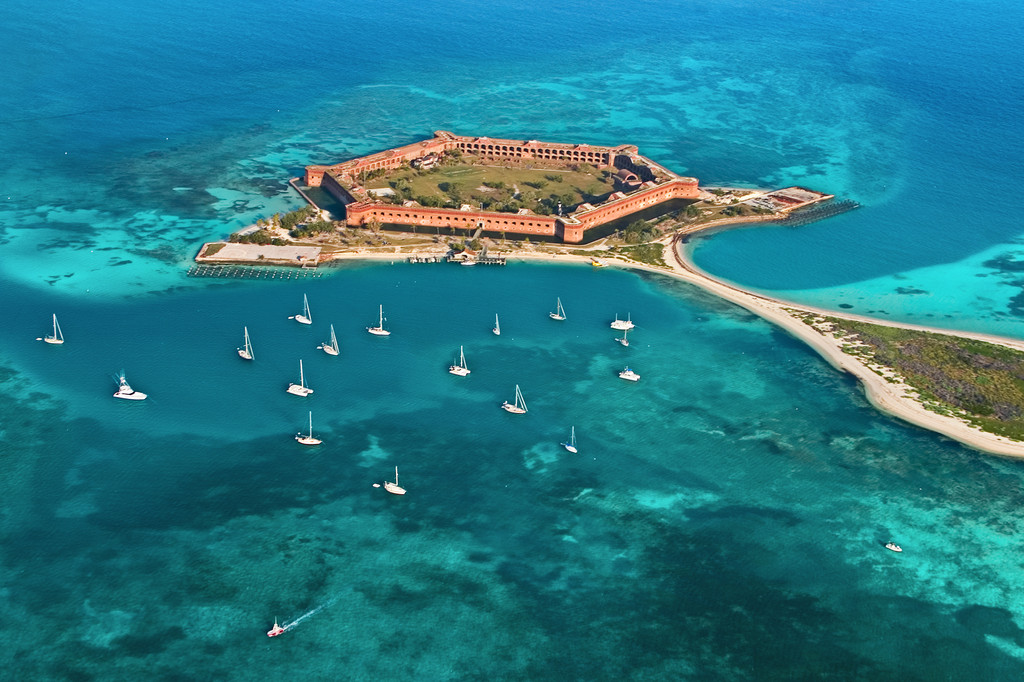
Dry Tortugas National Park is the reward for sailors and seaplanes willing to venture beyond the rum-spilling bars of Key West. And what a reward it is! The park’s crystal-clear waters are teeming with all sorts of curious creatures – amberjacks, stingrays, sea turtles – and full to the brim with coral gardens. The park covers a total area of 100 square miles, with the majority of it being water. For experienced divers, the park’s highlight is the Windjammer wreck, a 19th-century sailing ship that rests on the ocean floor.
Everglades National Park

Everglades National Park is to Florida what Yosemite is to California. A real chart-topper, it spreads its great grass rivers and hardwood hammocks through a whopping 1.5 million acres at the southern end of the Sunshine State. Airboats are the main MO of visiting. They’ll whiz you on high-octane tours through prairies and waterlogged swamps. Keep your eyes peeled for snapping alligators, marsh rabbits and monitor lizards as you go! But, the best part about Everglades? The weather! Everglades National Parks takes the top spot on our list of the best national parks to visit in the winter.
Also see: 2023 Guide to Everglades National Park on Seeker.
National Parks in Hawaii
Haleakalā National Park

Revered as the ‘House of the Sun’ by the Early Hawaiians, mighty Haleakalā stands tall above the legendary beaches and resort towns of Maui that spread below. Peaking at over 10,000 feet, it’s a smoke-belching volcano that hisses and splutters and seethes across a Mars-like landscape of cinder cones and lava rocks. It’s the perfect place for a sunrise or sunset experience, with breathtaking views over the island and beyond. And don’t miss out on the opportunity to hike up to Haleakalā Observatory and stargaze under some of the clearest skies in the world, with the Milky Way stretching out above you.
Also see: 2023 Guide to Haleakalā National Park on Seeker.
Hawaii Volcanoes National Park

Forever shifting and changing shape thanks to the magma spews and massive volcanic eruptions, Hawaii Volcanoes National Park is the place to go to get a feel for the Hawaii’s untamed geology. The park is home to two active volcanoes, including Kilauea, which has been erupting continuously since 1983. Hiking trails offer stunning views of lava fields, steam vents, and otherworldly landscapes. And after a day of exploring, soak in the natural beauty of the park’s lush forests, waterfalls, and beaches.
National Parks in Kentucky
Mammoth Cave National Park

UNESCO World Heritage credentials join with national park status to make Mammoth Cave National Park one of the largest underground tunnel systems in the world. It runs for a mega 400 miles through the subterrane of Kentucky, sprouting into hidden chambers and rooms and bottomless pits that are said to descend to the very center of the planet. One of the most interesting aspects of Mammoth Caves National Park is the human history that’s intertwined with the natural one. The caves have been used for thousands of years by indigenous peoples, and were even mined for minerals in the 19th century. Visitors to the park can explore the remnants of these early mining operations, including a few preserved buildings that show what life was like for miners in the 1800s.
Also see: 2023 Guide to Mammoth Caves National Park on Seeker.
National Parks in Indiana
Indiana Dunes National Park

Just across the water from the hustle and buzz of Chicago, Indiana Dunes National Park is a haven of shimmering beaches and thistle-topped sand hills. It’s not your typical desert landscape, but rather a rich tapestry of dunes, wetlands, prairies, and forests. With over 15,000 acres of protected land, it’s a paradise for hikers, birdwatchers, and beachgoers alike. One of the best things about the park is the diversity of ecosystems, which means there’s always something new to explore. You can climb the sandy peaks for stunning views of Lake Michigan or trek through the woods in search of rare plants and wildlife. The park also has an interesting history, with evidence of human habitation dating back thousands of years.
National Parks in Maine
Acadia National Park

Breathe deep. The salt air is strong on the granite domes of Acadia National Park. Acadia is a treasure trove of natural beauty that encompasses Mount Desert Island —and then some. Besides the iconic peaks and sandy beaches, there’s also the Schoodic Peninsula, known for its rugged coastline and charming fishing villages. If you’re a fan of the great outdoors, Acadia is New England’s favorite destination for rock climbing, camping, cycling, and even stargazing, thanks to the park’s Dark Sky status.
Also see: 2023 Guide to Acadia National Park on Seeker.
National Parks in Michigan
Isle Royale National Park

Isle Royale National Park is about as close to Canada as it’s possible to get without straying over the border. Like a stroke of a paintbrush, it dashes through the waters of Lake Superior just eight miles from the top edge of the United States. And it’s a frontier in more ways than one. It’s a place that’s so remote and isolated, you’ll feel like you’ve stepped back in time to an era where nature was the only ruler. The island is only accessible by ferry or seaplane, so you can expect to leave the hustle and bustle of civilization behind as soon as you step foot on the island. One of the unique things about Isle Royale is the abundance of wildlife that roams freely across the island, including wolves and moose. It’s the perfect destination for nature enthusiasts, hikers, and wildlife watchers.
National Parks in Minnesota
Voyageurs National Park

Virtually contiguous with the lake lands of Ontario, Voyageurs National Park accounts for 218,000 acres of northern Minnesota. The park, located in the tippy top of Minnesota, is a true wilderness adventure. With its countless lakes and waterways, it is a kayaker’s paradise. During the summer, visitors can explore Rainy Lake and Kabetogama on kayaks, canoes or paddleboards. For those who prefer to stay on land, the park has a variety of hiking trails that offer stunning views of the forests, lakes, and wildlife. Visitors can keep an eye out for moose, beavers, and loons among other wildlife.
National Parks in Missouri
Gateway Arch National Park

Gateway Arch National Park isn’t your run-of-the-mill sort of US national park. First off, it’s the smallest of all the parks in the country, clocking in at under 200 acres. Second, it’s smack bang in the middle of downtown St. Louis. Yep, there are no arduous hiking trails to the tops of volcanos to be found here. However, you do get a startling monument to the westward expansion of the United States and loads of history about the Louisiana Purchase. Not a bad trade off, huh?
National Parks in Montana
Glacier National Park

Glacier National Park, often referred to as the “Crown of the Continent,” is a paradise for outdoor enthusiasts. The park is home to more than 700 miles of hiking trails, including the famous Going-to-the-Sun Road, which is a 50-mile long scenic drive that offers breathtaking views of glaciers, valleys, and alpine lakes. In addition to hiking, visitors can enjoy biking, fishing, and camping in the park. For those who prefer to take it easy, a leisurely drive on the Many Glacier Road is highly recommended, where you can spot wildlife such as elk, bighorn sheep, and mountain goats.
Also see: 2023 Guide to Glacier National Park on Seeker.
National Parks in Nevada
Great Basin National Park
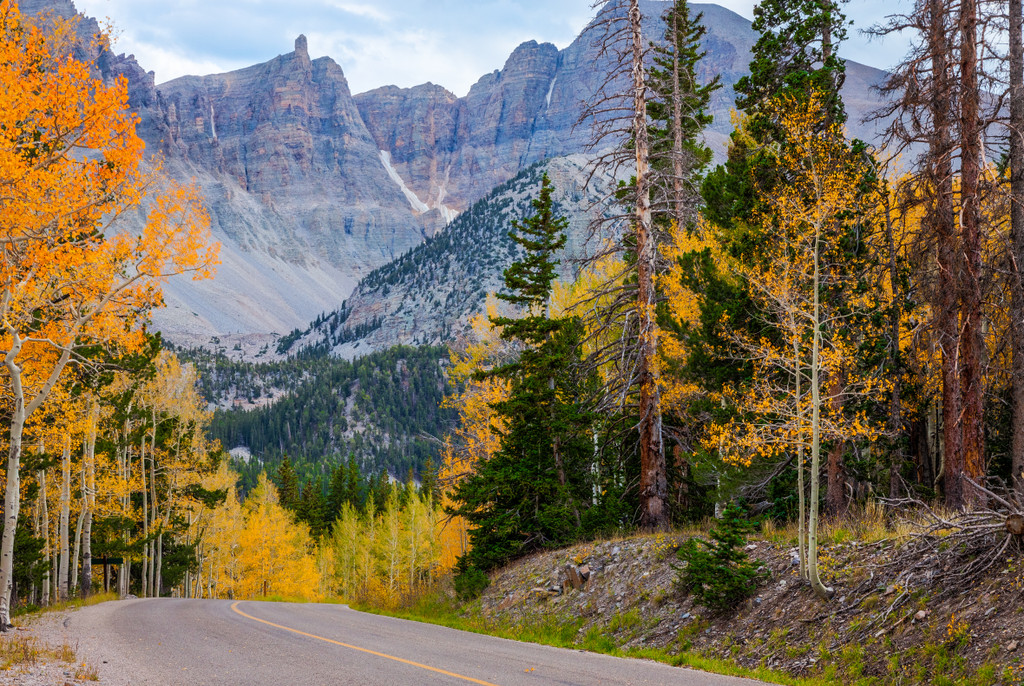
Small but stunning, Great Basin National Park and the ridges of the South Snake Mountains dash across the eastern edge of Nevada. With an area of over 77,000 acres, the park offers a diverse landscape ranging from ancient forests to barren mountain peaks. Wheeler Peak, the highest point in the park, rises to an impressive 13,063 feet and offers spectacular views of the surrounding terrain. IThe park is also an excellent destination for stargazing due to its remote location and low levels of light pollution. In fact, Great Basin National Park is home to the renowned Great Basin Observatory, which hosts public stargazing events and houses a state-of-the-art telescope.
National Parks in New Mexico
Carlsbad Caverns National Park

Descend beneath the Guadalupe Mountains and discover what’s certainly one of the most enthralling cave systems in the US at Carlsbad Caverns National Park. Discovered in 1898, this national park is home to a staggering 119 known caves. The largest and most famous of them is the Carlsbad Cavern, which stretches over 30 miles and features a vast underground chamber known as the Big Room. Beyond caverns, there is a seemingly endless array of chambers and channels here weave through strange mineral formations and resplendent water pools fringed by dustings of oxide, not to mention stalactites with curious names like the Totem Pole and the Iceberg Rock.
Also see: 2023 Guide to Carlsbad Caverns National Park on Seeker.
White Sands National Park

Wear the sunnies for this one, folks! Yep, the ‘white’ in White Sands National Park really is white. It unfolds along more than 270 square miles of stunning white gypsum sand dunes, which are formed from gypsum crystals left behind from a long-gone shallow sea. The dunes are constantly shifting and changing, creating an otherworldly landscape that’s perfect for exploration. Visitors can hike along the dunes, sled down the hills, or take part in ranger-led full-moon hikes to experience the park’s beauty at night. The park also offers guided tours and educational programs that provide a deeper understanding of the area’s unique ecology and history.
Also see: 2023 Guide to White Sands National Park on Seeker.
National Parks in North Dakota
Theodore Roosevelt National Park

Named for the US president who once escaped to North Dakota backcountry after a family tragedy in 1884, the Theodore Roosevelt National Park mixes badlands with mountains and offers glimpses of the iconic American bison. The reserve is split into three: North, South and Elkhorn. The first sports rugged canyons dotted with colossal boulders. The second is about rolling grass badlands and buffalo. Elkhorn, meanwhile, is the place to go to trace the history of Teddy Roosevelt.
Also see: 2023 Guide to Theodore Roosevelt National Park on Seeker.
National Parks in North Carolina
Great Smoky Mountains National Park

The Great Smokies are the jewel in the crown of Appalachia. They roll through Tennessee and North Carolina in a fog of hazy ridges and moss-caked forests, babbling streams and rock bluffs with lookouts you’ll never forget. Well…you and the other 12 million people who choose to visit this iconic reserve each year. Yep – Great Smoky Mountains National Park is the single most popular US national park of them all. It’s a well-deserved accolade, too, what with 850 miles of hiking path to conquer, wild fly-fishing spots, and fun-filled nearby towns like Asheville and Pigeon Forge to get through.
Also see: 2023 Guide to Great Smoky Mountains National Park on Seeker.
National Parks in Ohio
Cuyahoga Valley National Park

Sandwiched between Cleveland and Akron on the eastern fringes of the built-up Midwest, Cuyahoga Valley National Park is something of an unexpected bout of wilderness in the Buckeye State. It might only be 35,000 acres big, but what it lacks in size, it makes up for in beauty. In autumn, the park is ablaze with color as the hickory forests are painted with vibrant reds and oranges. Summer brings an abundance of wildflowers that bloom around cascading waterfalls.
National Parks in Oregon
Crater Lake National Park
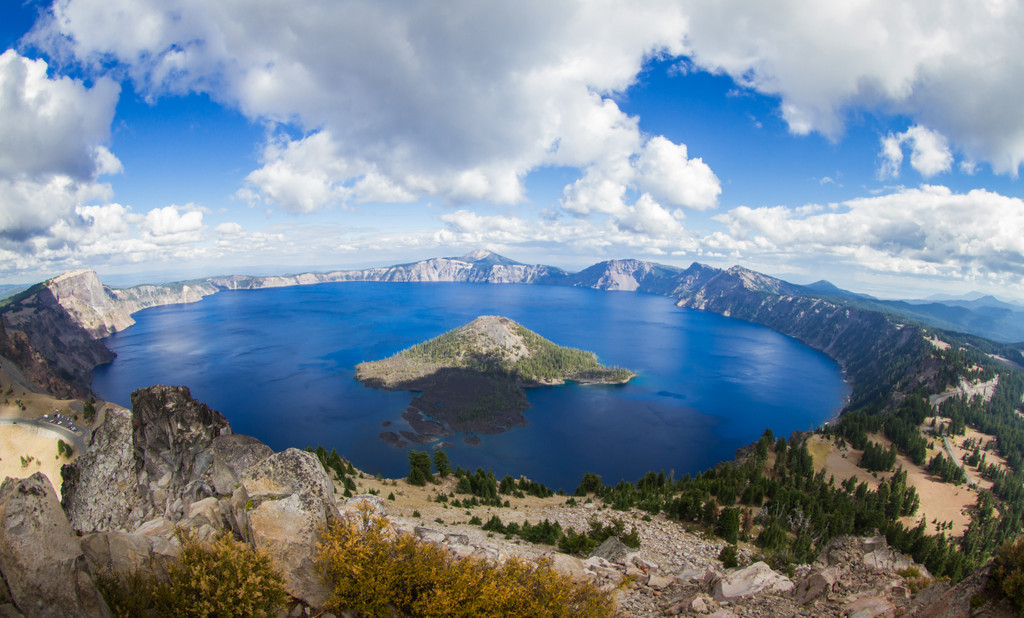
Just when you thought the West Coast couldn’t give you anymore scorchers on the national park front, Oregon comes up with the magnificent Crater Lake National Park. Crater Lake National Park, located in the southern Cascade Mountains, is home to sone of the deepest and most pristine lakes in the world (1,949 feet, to be exact). The 6-mile-wide caldera was formed over 7,000 years ago, following the eruption of Mount Mazama, and is now filled with incredibly clear blue water. The lake is fed solely by snow and rainfall, making it one of the purest bodies of water on earth. Visitors can take boat tours to Wizard Island, go fishing for rainbow trout, or hike the many trails that surround the lake, including the popular Garfield Peak Trail, which offers panoramic views of the lake and surrounding mountains.
Also see: 2023 Guide to Crater Lake National Park on Seeker.
National Parks in South Carolina
Congaree National Park

A great inland sea of loblolly pines, oaks, cypresses, and gums that spreads through South Carolina, Congaree National Park is home to some of the largest trees in the US – nay, the world! It’s said that the heftiest specimens of a whopping 15 species reside within the park between the snaking boardwalk trails and mosquito-buzzing creeks. Congaree is best-explored by water. Kayaking and canoeing along the Congaree River offers a unique perspective of the park, with views of the towering trees, hanging vines, and wildlife. The park is home to tons of endangered species, including the red-cockaded woodpecker and the Carolina eastern diamondback terrapin. Visitors can also hike along the boardwalks and trails that wind through the park, immersing themselves in the rich history and ecology of this unique ecosystem.
National Parks in South Dakota
Badlands National Park

A C-shaped swathe of carved mountains all dappled by different hues of red and orange, the Badlands National Park represent South Dakota’s raw and wild. As visitors drive down highway 240 that winds through the upper part of the park, they are treated to breathtaking vistas of sun-cracked canyons and walls of rock in every direction. Down south, things switch from grassy plains roamed by bison to dusty ridges watched over by bighorn sheep.
Also see: 2023 Guide to Badlands National Park on Seeker.
Wind Cave National Park

Wind Cave National Park holds the honor of being the first ever cave to gain national park status anywhere on the globe. It’s another of the American reserves dedicated by keen naturalist Teddy Roosevelt, which means it got its tags way back in 1903. The focal point? How about one of the longest and densest underground cave systems around. A whopping 150 miles of tunnels and chambers exist here beneath the rolling South Dakotan prairie. The cave system at Wind Cave National Park is unique due to its unusual formations, such as boxwork, a honeycomb-like structure that is rarely found in other caves. Visitors can explore the cave through ranger-led tours that range from easy to strenuous. Along the tours, visitors can see unique features such as frostwork, cave popcorn, and the cave’s signature calcite fin formations.
National Parks in Texas
Big Bend National Park

Rolling down from the Chisos to the Chihuahuan, from mountains to desert, the Lone Star State’s Big Bend National Park could be your chance to channel that inner John Wayne. It’s daunting stuff. At 1,200+ square miles, the park hosts all sorts of habitats and corners, from the babbling Rio Grande to the pine-scented pinnacles of Emory Peak. But that’s Texas for you: Nothing in half measures. Especially not rancher-trodden outback, canyon trails, rivers, bluffs, and waterfalls.
Also see: 2023 Guide to Big Bend National Park on Seeker.
Guadalupe Mountains National Park

Virtually contiguous with the southern end of Carlsbad Caverns National Park over in New Mexico, Guadalupe Mountains National Park is one of the more off-the-beaten-path joys of Texas. The park’s remote location, nestled in the far west corner of Texas, makes it the perfect place to escape the hustle and bustle of everyday life. Visitors can experience the incredible diversity of the Chihuahuan Desert by exploring the park’s canyons, peaks, and valleys, which offer breathtaking views of the surrounding wilderness.
National Parks in Utah
Arches National Park

Arches, arches, and more arches – that’s what’s on the sightseeing map of the aptly-named Arches National Park. A paradise for outdoor enthusiasts, the park offers a variety of adventure activities, all of which are sure to get your adrenaline pumping. Hiking in the park is an excellent way to explore the trails and view the stunning arches. You can take a leisurely stroll along the road-side vistas, or challenge yourself to a more strenuous hike, like the Devil’s Garden Trail, which leads to eight different arches. If you’re feeling adventurous, you can also try slacklining, a fun activity that involves balancing on a narrow strip of webbing suspended between two anchor points. Road biking is another popular activity in the park, with several scenic routes to choose from.
Bryce Canyon National Park

You can only imagine how the first Mormon pioneers would have felt when they roamed westwards to discover the eye-watering Bryce Canyon back in the 1850s. Probably not unlike how the first visitors to this awesome Utah park feel these days, the moment they lay eyes on that sea of vanilla and vermillion rock, stacked in jagged hoodoos for as far as the eye can see.
Bryce Canyon National Park is home to one of the most unique geological formations in the world. The park’s signature hoodoo formations were formed over millions of years through the process of erosion, as wind, water, and ice carved away the sedimentary rocks to reveal the colorful spires that can be seen today. The hoodoos are not only beautiful, but they also provide important habitat for a variety of plant and animal species. The park is home to over 400 species of plants, including bristlecone pines that can live for thousands of years, and a variety of wildlife, including mule deer, coyotes, and mountain lions.
Also see: 2023 Guide to Bryce Canyon National Park on Seeker.
Canyonlands National Park
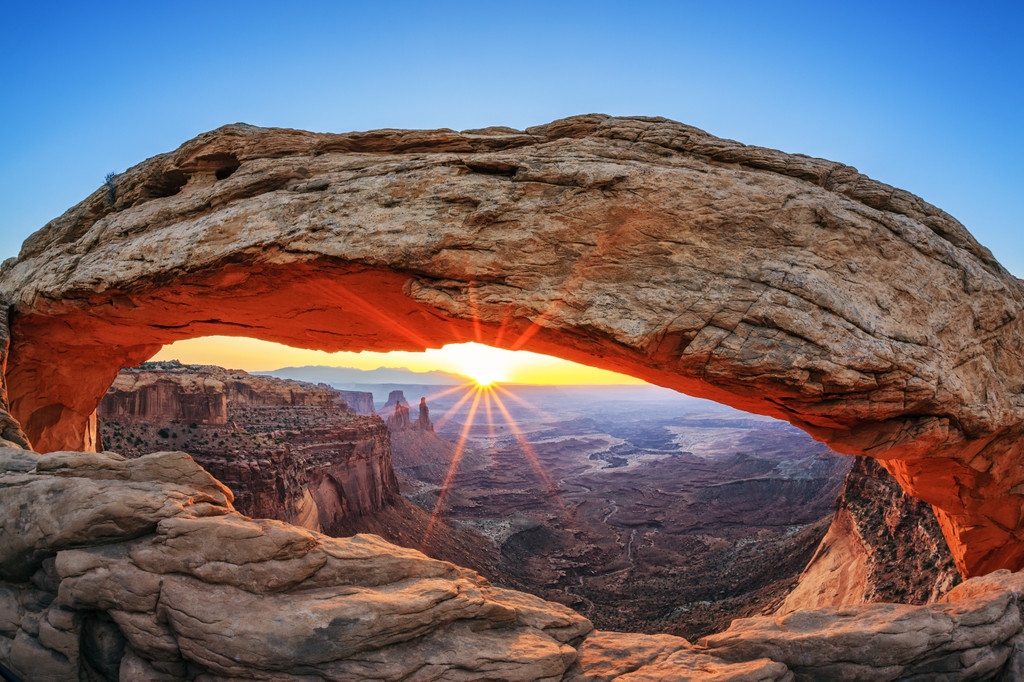
In Moab you get two for one: The Arches and the Canyonlands. Canyonlands National Park is a vast, rugged wilderness that covers over 300,000 acres of southeastern Utah. The park is divided into four districts, each with its unique landscapes and attractions. The Island in the Sky is the most accessible and popular district, offering breathtaking views of the canyons and mesas from atop a 1,000-foot plateau. The Needles district is renowned for its colorful spires and rock formations, as well as its world-class hiking trails. The Maze, a remote and challenging district accessible only by 4×4 vehicles or backpacking, offers solitude and adventure for experienced wilderness explorers. Finally, the rivers and canyons of the Horseshoe Canyon Unit provide a glimpse into the area’s rich cultural history with well-preserved rock art panels and archaeological sites.
Capitol Reef National Park

Stretching across the heart of the Beehive State in a 60-mile spread of Western-worthy outback is Utah’s Capitol Reef National Park. It’s named for the peaked domes of Navajo sandstone that loom like the tops of US capitol buildings throughout the preserve. Capitol Reef National Park is a treasure trove of geological wonders that dates back over 65 million years. The park is home to a unique collection of geological formations, including domes, cliffs, canyons, and arches. The park’s most iconic feature is the Waterpocket Fold, a massive geological formation that stretches for 100 miles and rises up to 7000 feet above sea level. The Waterpocket Fold is a unique feature, as it is a monocline, meaning that it has a single slope that forms a steep incline.
Zion Canyon
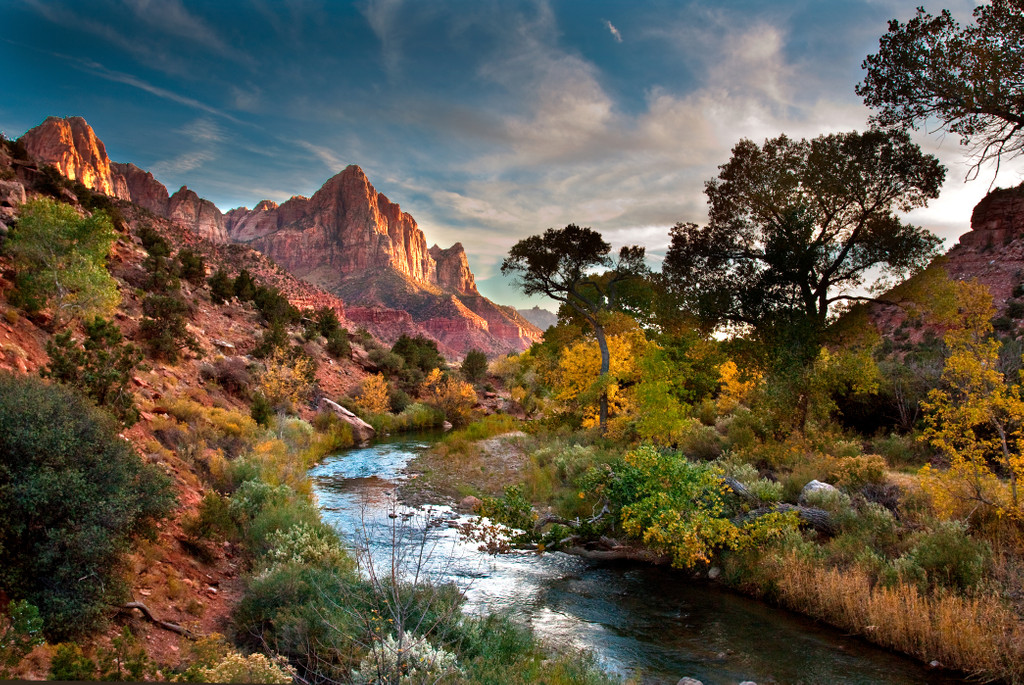
Catch your breath. Look up. Zion National Park is Utah at its finest. Flaming rocks dashed with crimson and salmon tower to the cloudless skies. Prickly pear cacti jut from the dust. Bighorn sheep hop over the rock faces.
Zion National Park is not just a feast for the eyes, but also a haven for adventure seekers. The park’s centerpiece is the Zion Canyon, which is over 15 miles long and up to half a mile deep, offering visitors the chance to hike through narrow canyons and towering rock formations. One of the park’s most popular trails, the Angels Landing Trail, takes hikers along a narrow ridge with sheer drops on either side and offers panoramic views of the canyon. The park is also home to some of the best rock climbing in the United States, with challenging routes that attract climbers from around the world. The park’s diverse terrain provides opportunities for canyoneering, backpacking, and mountain biking as well.
Also see: 2023 Guide to Zion National Park on Seeker.
National Parks in Virgin Islands
Virgin Islands National Park

Greek blue and rainforest green are the color palette of the US Virgin Islands, home of the heavenly Virgin Islands National Park. Covering just over 60% of the island of Saint John, the park ranges from colorful coral reefs to jungles awash with orchids and palms. Do not miss Trunk Bay and its cotton-hued sand, or the uber-romantic Honeymoon Beach. Visitors to Virgin Islands National Park can also explore over 20 hiking trails, including the popular Reef Bay Trail, which winds through the rainforest and past ancient petroglyphs.
National Parks in Virginia
Shenandoah National Park

Not far from Washington, D.C., Shenandoah National Park beckons folk away from the big city with its sylvan hills and scenic motor routes. Covering the bucolic Blue Ridge Mountains, the park is long and thin, centering on the 105-mile Skyline Drive that offers a new vista of valley bottom or distant peak at every turn in the road. The park is rich in history, with notable sites including Rapidan Camp, which was the summer retreat of President Herbert Hoover, and the ruins of a 19th-century resort called Brown’s Mountain that was destroyed by fire in 1909.
Also see: 2023 Guide to Shenandoah National Park on Seeker.
National Parks in Washington
Mount Rainier National Park

Mount Rainier National Park emanates out from the hulking peak – the highest in the Cascades – that sits at its center and gives it its name. Wherever you are in the reserve, there’s rarely a moment when the snow-mantled summit of the mighty mountain won’t be within eyeshot. Around it swirls beautiful springtime wildflower meadows and gushing waterfalls fed by ancient glaciers.
Located just a couple of hours from Seattle, Mount Rainier National Park is home to more than 25 glaciers and snowfields, making it is a popular destination for winter sports like skiing and snowshoeing. In the summer, the park hosts a diverse ecosystem of forests, meadows, and rivers, providing a home for a variety of wildlife, including black bears, deer, elk, and mountain goats. Visitors can take guided ranger walks to learn more about the park’s flora and fauna, or explore on their own on over 260 miles of trails. For those seeking a more leisurely experience, the park’s scenic drives offer stunning views of the surrounding landscape.
Also see: 2023 Guide to Mount Rainier National Park on Seeker.
North Cascades National Park

One road in, one road out – that’s the remoteness of the North Cascades National Park. Even the winding, wiggling route of the 20 highway offers only glimpses of this 500,000-acre wilderness, which reaches all the way north to the US-Canada border in a medley of summits that easily surpass 9,000 feet. With more than 300 glaciers, the park is often called the “American Alps” and is a paradise for mountaineers and backcountry skiers. The park’s isolation and rugged terrain have kept human development to a minimum, creating a stunning and unspoiled natural environment perfect for escaping the hustle and bustle of daily life.
Also see: 2023 Guide to North Cascades National Park on Seeker.
Olympic National Park

Wet but wonderful, Olympic National Park spans the vast Olympic Peninsula to the west of Seattle. It’s is one of the few US national parks where you can range from snowy glaciers to salt-washed coastline in a single day. In fact, thanks to Hurricane Ridge Ski Area, it’s even possible to don the salopettes by morning and hit the waves with your surfboard in tow by afternoon!
Also see: 2023 Guide to Olympic National Park on Seeker.
National Parks in West Virginia
New River Gorge National Park

New River Gorge National Park, West Virginia’s first national park, is an underrated adventure spot located in the center of the Appalachian Mountains. Previously a mining town that boomed in the late 1800s, the now-protected area consists of 53 miles of free flowing white water that continue to carve out the 1000 foot sandstone cliffs. It is the deepest river gorge in the Eastern United States and offers countless opportunities for exploration. With whitewater rafting, kayaking, rock climbing, hiking, fishing, and picturesque riverscapes, there’s an activity for any type of visitor.
Also see: 2023 Guide to New River Gorge National Park on Seeker.
National Parks in Wyoming
Grand Teton National Park

Straddling the Snake River and the ski runs of Jackson Hole, and home to some of the most gnarled and craggy peaks in the Rockies, Grand Teton National Park can seem like a tailor-made playground for those who like to whiz downhill or scramble up it! Grand Teton National Park is a paradise for outdoor enthusiasts, with activities like hiking, rock climbing, kayaking, and fishing attracting adventurers from all over the world. Mountaineers like the legendary Jimmy Chin have tested their skills on the park’s famous peaks, while others prefer to enjoy the park’s beauty from the comfort of its scenic byways.
Also see: 2023 Guide to Grand Teton National Park on Seeker.
Yellowstone National Park

Yellowstone National Park hardly needs any introduction. The oldest of the US national parks, and one of the most visited, it continues to wow all who explore its spouting geysers, hot springs, mud pots, prismatic pools, and brooding mega volcano. The sprawling park, which covers an area of 2.2 million acres, is primarily located in Wyoming, but also extends into Montana and Idaho. It’s a haven for geothermal stuff, like Old Faithful, a geyser that erupts every 90 minutes, and the Grand Prismatic Spring, the largest hot spring in the United States.
Also see: 2023 Guide to Yellowstone National Park on Seeker.
US National Parks FAQs
What exactly is a national park?
A national park is a designated area of land that is protected and managed by the government to preserve its natural and cultural resources for public enjoyment, education, and future generations.
How many national parks are there in the US?
There are 63 national parks in the United States. There is speculation that another one is coming as early as 2023. Check out America’s Next National Park? Top Contenders for 2023.
How are national parks different from other protected areas?
National parks are typically larger in size and have a higher level of protection compared to other types of protected areas. They often encompass diverse ecosystems, unique geological features, and significant cultural or historical sites.
What are the best national parks to visit in the winter?
Depending on your interests, there are many fantastic national parks to visit in the winter. If you are looking for a winter adventure, consider Glacier National Park or Yellowstone National Park. If you are looking to escape the cold, perhaps Everglades National Park is more your style. For more winter inspiration, check out 13 Epic National Parks to Visit in Winter.
Are national parks free?
No, national parks usually charge an entrance fee. However, some national parks offer free admission on specific days or have annual passes available for purchase, which can provide cost-saving opportunities for frequent visitors. The America the Beautiful Pass provide access to all national parks for one flat fee.
What is an America the Beautiful Pass?
The America the Beautiful Pass offers entrance or access to more than 2,000 federal recreation sites across the country, including national parks, national forests, wildlife refuges, national monuments, and more. It covers entrance fees, standard amenity fees, and day-use fees for the pass holder and accompanying passengers in a single, private vehicle. The pass can be a cost-effective option for frequent visitors to federal recreation sites, as it provides unlimited access for a full year from the month of purchase for a flat fee of $80.
Are pets allowed in national parks?
Pets are generally allowed in national parks but are subject to certain restrictions. They must be kept on a leash at all times and are often not allowed on trails or in certain sensitive areas to minimize human-wildlife conflicts and protect the park’s ecosystems. It’s important to check the specific pet regulations of the national park you plan to visit.
What state has the most national parks?
California is home to nine national parks, more than any other state. California national parks offer diverse landscapes, ranging from stunning coastlines and deserts to towering trees and majestic mountains. For a complete list of California’s national parks, check out: All of California’s National Parks: Ranked.
National Parks Map
Ready to start exploring the US national parks? Check out our interactive map of all 63 US National Parks on Seeker and start tracking the ones you’ve visited.
National Parks Quiz
How many national parks have you been to? Take the national parks quiz and let us know!
